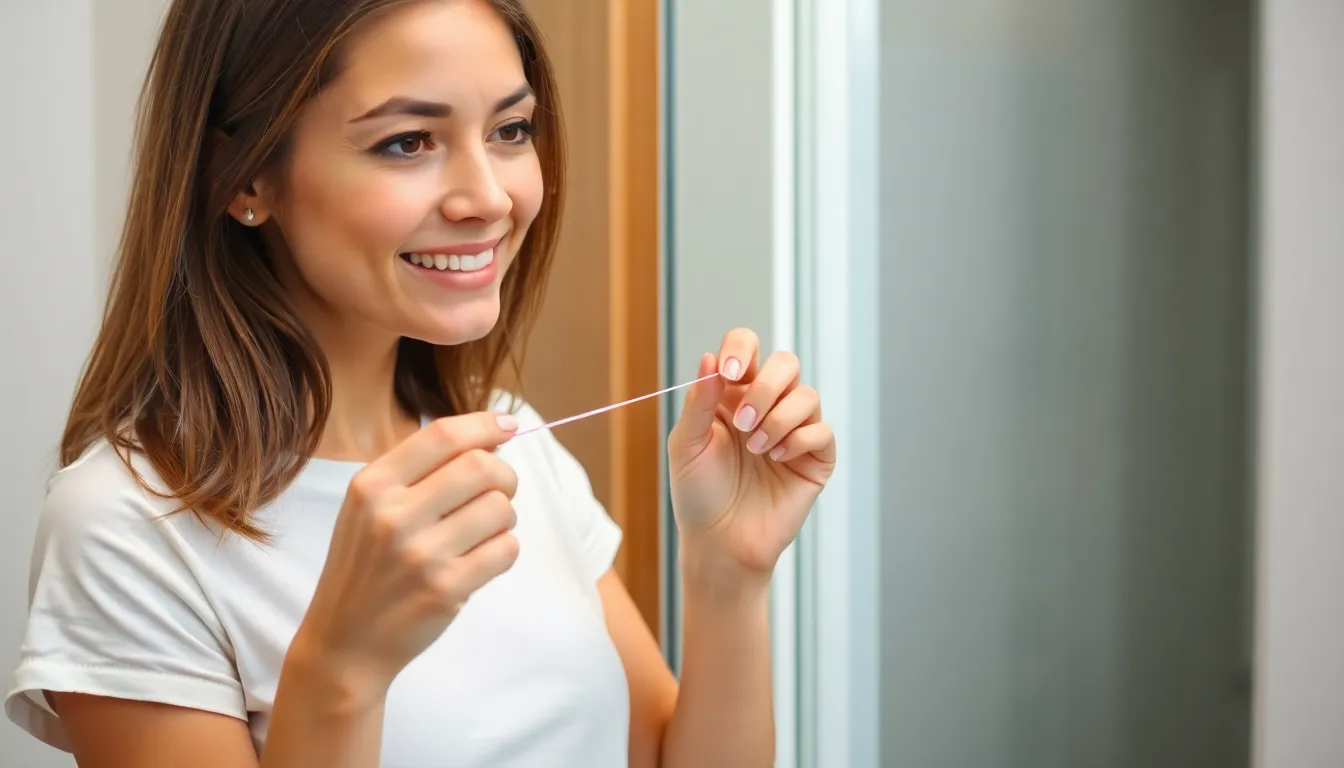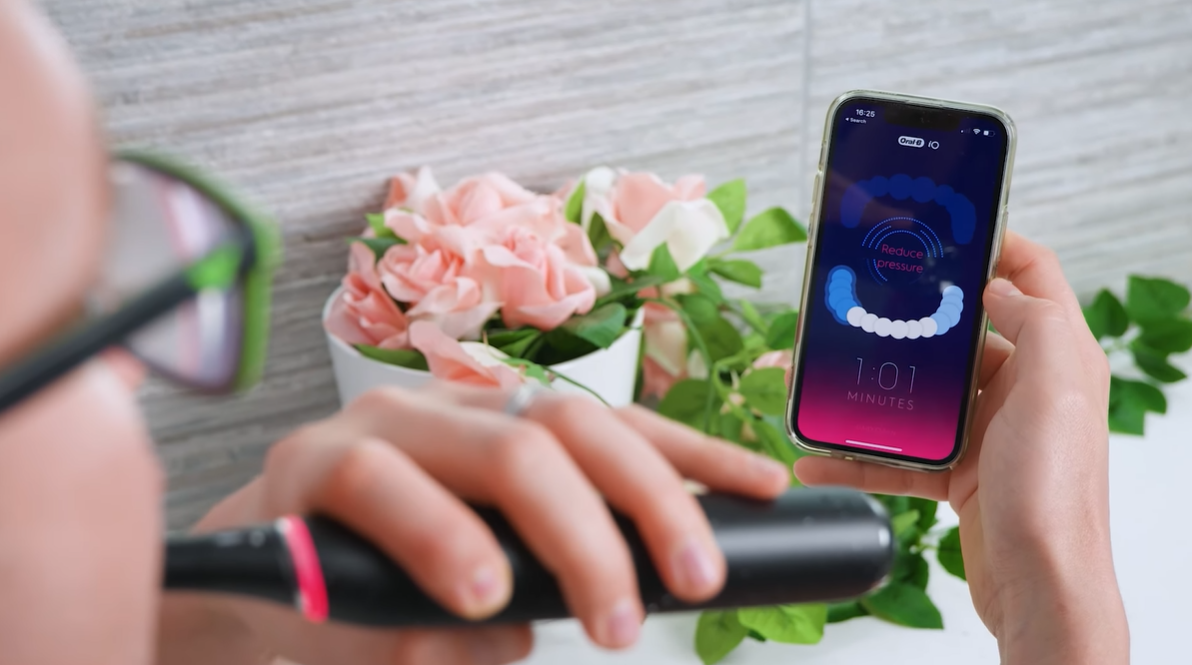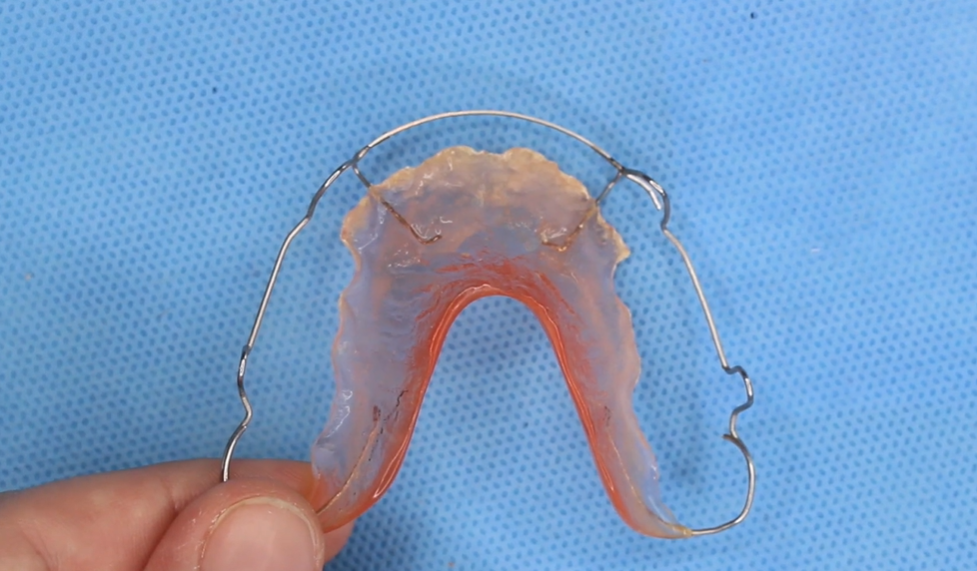If you buy through links on our site, we may earn a small affiliate commission to help support the blog - at no extra cost to you. It never influences our product selection process. Thank you!
Are you struggling with an overbite while using Invisalign? Those small rubber bands might be the key to your perfect smile. Many patients don’t realize just how crucial these elastics are in the Invisalign treatment process.
Invisalign rubber bands work specifically to correct overbites by applying the precise pressure needed to shift your jaw alignment. Unlike traditional braces with visible metal brackets, Invisalign’s clear aligner system uses these specialized elastics to address more complex orthodontic issues while maintaining the aesthetic benefits you chose Invisalign for. You’ll typically attach these rubber bands to small hooks or buttons on your aligners, creating the necessary tension to gradually move your teeth and jaw into proper position.
Understanding Overbites and Invisalign Treatment
An overbite occurs when your upper front teeth overlap the lower front teeth vertically. This common dental condition affects approximately 70% of children and many adults in the United States. Overbites range from mild (where there’s a slight overlap) to severe (where the lower teeth might completely disappear behind the upper teeth when biting).
Invisalign treatment has revolutionized how orthodontists correct overbites by using a series of clear, removable aligners that gradually shift teeth into proper alignment. Unlike traditional metal braces, Invisalign offers a discreet solution that’s nearly invisible to others.
For moderate to severe overbites, Invisalign treatment often incorporates specialized rubber bands to provide additional force needed for jaw realignment. These elastics work with the aligners to create precise movements that standard aligners alone can’t achieve.
Dr. Todd B. Harris, our lead orthodontist, notes: “Many patients come to us concerned about their overbite but hesitant about traditional braces. I’ve seen remarkable transformations using Invisalign with elastics, allowing patients to maintain their confidence throughout treatment while achieving excellent results.”
Sarah, a 34-year-old professional who recently completed her Invisalign treatment with us, shared: “I’d lived with an overbite my entire life and was convinced only traditional braces could fix it. The combination of Invisalign aligners and rubber bands corrected my overbite completely while allowing me to maintain a professional appearance during important client meetings.”
The typical treatment duration for overbite correction with Invisalign ranges from 12-18 months, depending on the severity of your condition and compliance with wearing both the aligners and rubber bands as directed.
How Invisalign Rubber Bands Work for Overbite Correction

Invisalign rubber bands (elastics) work alongside clear aligners to create the additional force needed for effective overbite correction. These small but powerful components pull your upper teeth backward while simultaneously pushing lower teeth forward, helping to realign your bite properly. The combination addresses both dental and skeletal aspects of an overbite by strategically repositioning both your teeth and jaw.
The Mechanics Behind Elastics in Invisalign Treatment
Elastics attach to small buttons or precision cuts strategically placed on your Invisalign aligners. They typically run from the upper canines to the lower molars at carefully calculated angles, creating tension that guides teeth and jaws into their ideal positions. This targeted force works in ways that aligners alone cannot achieve, enabling more substantial jaw repositioning for moderate to severe overbites.
“What makes the elastic-aligner combination so effective is the creation of additional force vectors,” explains Dr. Todd B. Harris. “These vectors complement the aligners’ tooth-moving capability, improving overall treatment effectiveness and often eliminating the need for traditional braces or surgery in complex cases.”
Consistent wear remains essential for optimal results. Many patients like Jennifer, a 34-year-old marketing executive, initially worry about the visibility of rubber bands. “I was concerned the elastics would make my treatment obvious in client meetings,” she shares. “But they’re actually quite discreet, and the results have been remarkable—my confidence has skyrocketed as my overbite has improved.”
Types of Rubber Bands Used for Overbites
Class 2 elastics represent the most common type used for overbite correction. These specialized rubber bands attach from your upper canines (or buttons placed on these teeth) to your lower molars, creating the precise pulling action needed to reposition your jaw. Orthodontists customize the size and strength of the bands based on your exact overbite severity and treatment requirements.
In some cases, buttons are bonded directly to teeth rather than to the aligners, ensuring proper placement and maximum effectiveness of the elastics. The strategic positioning creates the optimal force direction to gradually shift your jaw alignment. Dr. Harris notes, “The versatility of these elastics allows us to address different types of overbites with remarkable precision, giving patients excellent results without compromising the aesthetic benefits of Invisalign treatment.”
Patients typically wear these elastics 20-22 hours daily, removing them only for eating and cleaning. Your orthodontist will provide exact instructions for changing elastics, usually every 8-12 hours, to maintain consistent pressure throughout your treatment journey.
Benefits of Using Rubber Bands with Invisalign for Overbites

Rubber bands significantly enhance Invisalign treatment for overbite correction by providing targeted directional forces that aligners alone can’t achieve. These elastics work strategically with your clear aligners to address both dental alignment and skeletal jaw positioning issues.
Improved Treatment Effectiveness
Invisalign rubber bands apply exact directional forces that reposition both your teeth and jaw for optimal bite correction. These elastics attach to precision-cut slots or specially designed buttons on your aligners, creating tension between your upper and lower teeth. For moderate to severe overbites, the rubber bands pull upper teeth backward while simultaneously pushing lower teeth forward, effectively targeting the underlying skeletal issues. Many patients see results comparable to traditional braces, even in complex cases that previously required more invasive treatment options.
Dr. Todd B. Harris explains, “The precision of combining elastics with Invisalign gives us incredible control over jaw positioning. I’ve treated many patients with important overbites who achieved perfect alignment without ever needing traditional braces or surgical intervention.”
Reduced Treatment Time
Adding rubber bands to your Invisalign treatment can significantly accelerate your path to a corrected bite. These elastics exert constant, targeted tension that speeds up tooth movement and jaw alignment in exact directions. Patients using rubber bands often complete their treatment faster than those using aligners alone for similar overbite conditions. The elastics help guide precise movements that aligners by themselves might struggle to accomplish efficiently.
Emma, a 32-year-old professional who completed treatment with Dr. Harris, shares, “I was concerned about wearing Invisalign for an extended period, but adding the rubber bands cut my expected treatment time by nearly four months. My overbite correction progressed much faster once we incorporated the elastics, and the results were better than I expected.”
The strategic placement of rubber bands allows orthodontists to fine-tune bite corrections after initial progress with the aligners, focusing specifically on the remaining alignment challenges rather than starting from scratch with a different treatment approach.
Wearing and Caring for Your Invisalign Rubber Bands

Invisalign rubber bands deliver targeted pressure to correct moderate to severe overbites by working beyond what aligners alone can accomplish. These elastics attach to buttons or precision cuts on your aligners, creating the necessary force to reposition your jaw effectively for optimal results.
Proper Placement Techniques
Correct placement of your Invisalign rubber bands is crucial for successful overbite correction. The elastics typically anchor from your upper canine teeth down to your lower molars, creating the precise angle needed to apply corrective force. Dr. Todd B. Harris emphasizes, “The exact placement of rubber bands can make the difference between efficient treatment and unnecessary discomfort.” Follow your orthodontist’s exact instructions for hooking the bands onto the designated attachments. Many patients find using a small mirror helpful when learning the proper technique. Lisa, a 34-year-old teacher, shares, “I struggled with placement during my first week, but after creating a visual routine with my bathroom mirror, it became second nature and my treatment progressed smoothly.”
Maintenance and Replacement Schedule
Your rubber bands require frequent replacement as they lose elasticity over time, compromising their effectiveness. Replace your elastics multiple times daily—typically every 12 hours or as directed by your orthodontist. Carry extra bands with you throughout the day to ensure you’re never without replacements. Proper hygiene practices include cleaning your aligners thoroughly and rinsing your mouth before inserting fresh rubber bands. Consistent replacement ensures continuous pressure application for effective overbite correction. Dr. Harris recommends creating a replacement routine tied to daily activities: “Most of my patients find success by changing their bands first thing in the morning and right before bed, integrating the habit into their existing dental care routine.” Remember that wearing your rubber bands for the prescribed 20-22 hours daily dramatically impacts your treatment timeline and results.
Potential Challenges and How to Overcome Them

Compliance and Wear Time
Consistent wear of rubber bands is essential for successful overbite correction with Invisalign. You’ll need to wear your elastics 20-22 hours daily to achieve optimal results. Removing them too frequently or forgetting to wear them significantly delays your treatment timeline and can reduce effectiveness. Many patients find setting reminders on their phones helps maintain the necessary wear schedule.
Dr. Todd B. Harris explains, “The number one factor affecting treatment success with Invisalign rubber bands is patient compliance. When patients consistently wear their elastics as directed, we see remarkable improvements in their overbites, often in less time than initially estimated.”
Discomfort and Soreness
Initial discomfort is common when you first start wearing Invisalign rubber bands for overbite correction. Your jaw and teeth may feel sore as they adjust to the new pressure points. This discomfort typically subsides within a few days as your mouth adapts to the treatment. Over-the-counter pain relievers like acetaminophen or ibuprofen can help manage any temporary soreness you experience.
“I was worried about pain when my orthodontist added rubber bands to my Invisalign treatment,” shares Michael, a 34-year-old patient. “The first two days were uncomfortable, but by day three, I barely noticed them. The improvement in my overbite after just six weeks made that brief discomfort completely worthwhile.”
Proper Placement and Maintenance
Incorrect placement of your rubber bands reduces treatment effectiveness and potentially causes unwanted tooth movement. You must follow your orthodontist’s exact instructions for attaching the elastics to the correct buttons or hooks on your aligners. Regular cleaning of both aligners and rubber band attachment points prevents bacteria buildup that can lead to bad odors or oral infections.
Your orthodontist will demonstrate the proper technique for placing and removing elastics during your appointment. Practicing this technique under supervision ensures you’re comfortable with the process before heading home.
Treatment Complexity
Severe overbite cases might require more complex protocols beyond standard elastic wear. Your treatment plan may include multiple rubber band configurations or additional orthodontic devices working alongside your Invisalign aligners. Regular monitoring appointments allow your orthodontist to assess your progress and make necessary adjustments if treatment isn’t advancing as expected.
Results: What to Expect from Invisalign with Rubber Bands

Timeline for Visible Improvements
Invisalign treatment with rubber bands produces noticeable improvements in overbite correction within exact timeframes. Most patients observe initial changes in their bite alignment after 4-6 weeks of consistent wear. The most important improvements typically occur between months 3-6 of treatment, when the combined forces of aligners and elastics begin effectively repositioning both teeth and jaw. Dr. Todd B. Harris notes, “Patients often experience that ‘aha’ moment around the three-month mark when they can feel their bite changing and see visible improvements in their profile.”
Final Outcomes
Combining Invisalign aligners with rubber bands creates results comparable to traditional braces for moderate to severe overbite cases. Your treatment will produce improved bite function, reduced jaw pain, and enhanced facial aesthetics. The precision of this combination approach effectively addresses both dental and skeletal components of an overbite, creating comprehensive correction that’s sustainable long-term.
Mark, a 34-year-old professional who completed treatment last year, shares: “I’d lived with an overbite my entire life and assumed surgery was my only option. After 14 months of Invisalign with rubber bands, my bite feels natural for the first time. The difference in my profile is remarkable—my colleagues noticed the change even before I pointed it out.”
Factors Affecting Success
Treatment success depends on several key variables:
- Compliance level: Wearing rubber bands for the prescribed 20-22 hours daily directly correlates with treatment effectiveness
- Proper elastic placement: Correctly attaching bands to the designated hooks ensures optimal force vectors
- Regular replacement: Changing elastics every 8-12 hours maintains consistent pressure
- Severity of overbite: More important cases require longer treatment durations but still achieve excellent results
Dr. Harris emphasizes that patient commitment dramatically influences outcomes: “The patients who achieve the most impressive results are those who diligently follow the rubber band protocol. This consistency allows the treatment to progress efficiently without setbacks.”
Post-Treatment Maintenance
After completing your Invisalign treatment with rubber bands, maintaining your results requires continued attention. Retention protocols typically include wearing a retainer nightly to prevent teeth from shifting back to their original positions. Your jaw’s new positioning generally becomes stable after the active treatment phase, creating lasting improvements in both function and appearance.
Conclusion
Invisalign rubber bands transform overbite treatment by providing the precise directional forces needed for effective jaw realignment. You’ll find these discreet elastics work in harmony with your clear aligners to address both dental and skeletal aspects of your overbite.
With consistent wear and proper care your treatment can actually progress faster than traditional methods. Most patients see noticeable improvements within 4-6 weeks and important changes by months 3-6.
Your commitment to following your orthodontist’s instructions about placement technique and wear time directly impacts your results. While there may be initial adjustment periods the end result is worth it – improved bite function reduced jaw pain and enhanced facial aesthetics without sacrificing your confidence during treatment.
Frequently Asked Questions
How do rubber bands work with Invisalign for overbite correction?
Rubber bands create additional force that standard aligners alone cannot achieve. They pull upper teeth backward while pushing lower teeth forward, addressing both dental and skeletal aspects of overbites. These elastics attach to small buttons on the aligners, running from upper canines to lower molars at specific angles to guide teeth and jaws into their ideal positions.
How long do I need to wear Invisalign rubber bands each day?
For optimal results, you should wear your rubber bands 20-22 hours per day, removing them only while eating and cleaning your teeth. Each band should be changed every 8-12 hours to maintain consistent pressure. Consistent wear is crucial for successful treatment and can significantly affect how quickly your overbite is corrected.
Will Invisalign rubber bands be noticeable when I smile?
While rubber bands are visible, they’re relatively discreet compared to traditional braces. Most patients report that the small, clear buttons and thin elastics are hardly noticeable in casual conversation. Many professionals choose this treatment specifically because it allows them to maintain a professional appearance while effectively correcting their overbite.
How long does overbite correction with Invisalign and rubber bands take?
Typical treatment duration ranges from 12 to 18 months, depending on the severity of your overbite and your adherence to the prescribed wear schedule. Using rubber bands can actually reduce overall treatment time by providing targeted tension that accelerates tooth movement and jaw alignment. Some patients complete treatment several months ahead of schedule.
Do Invisalign rubber bands cause pain or discomfort?
Initial discomfort is common but typically subsides within a few days as your mouth adjusts. The sensation is usually described as pressure rather than pain. Over-the-counter pain relievers can help manage any soreness. Most patients find that any discomfort is minimal compared to traditional braces and diminishes quickly with consistent wear.
What type of rubber bands are used for overbite correction?
Class 2 elastics are most commonly used for overbite correction with Invisalign. These bands are customized based on your specific needs and the severity of your overbite. Your orthodontist will select the appropriate size, strength, and configuration to create the precise forces needed to correct your particular case.
How do I properly place the rubber bands with my Invisalign?
Follow your orthodontist’s specific instructions for placement. Typically, bands are attached to hooks or buttons on your aligners, running from upper canines to lower molars. Using a mirror can be helpful when learning placement techniques. Proper positioning is crucial for treatment effectiveness, so ask for a demonstration during your appointment if you’re unsure.
Can severe overbites be corrected with Invisalign and rubber bands?
Yes, even moderate to severe overbites can often be treated with Invisalign and rubber bands. This combination approach can produce results comparable to traditional braces without the need for invasive treatments. For particularly complex cases, your orthodontist might recommend multiple rubber band configurations or additional orthodontic devices to achieve optimal results.
What happens if I forget to wear my rubber bands?
Inconsistent wear can significantly extend your treatment time and potentially compromise results. If you forget occasionally, simply resume your normal wear schedule. However, if you frequently forget, your treatment progress will slow down. Setting reminders on your phone can help maintain the habit until it becomes routine.
Will I need retainers after my Invisalign treatment is complete?
Yes, retainers are essential after completing your Invisalign treatment with rubber bands. They prevent teeth from shifting back to their original positions. Your orthodontist will provide specific instructions for retainer wear, typically starting with full-time wear before transitioning to nighttime only. Consistent retainer use is crucial for maintaining your new smile long-term.






